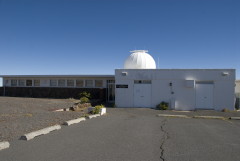| Home > USA > Hawai‘i Observatories |
|
|
|||
|
The Haleakala High Altitude Observatory Site, on the Island of Maui, is the site of Hawaii’s first astronomical research. "Seeing" conditions on Haleakala can be as good as on Mauna Kea, a site recognized to have the best astronomical conditions for ground-based observatories. Click on thumbnails for a larger version
|
|||
|
|||
|
|||
|
Xavier M. Jubier
1999 August 11
2001 June 21
2001 December 14
2002 December 4
2003 November 23
2005 April 8
2005 October 3
2006 March 29
2006 September 22
2008 February 7
2008 August 1st
2009 January 26
2009 July 22
2010 January 15
2010 July 11
2012 May 20
2012 November 14
2013 May 10
2013 November 3
2014 April 29
2015 March 20
2016 March 9
 Observatories in Hawai‘i, USA
Observatories in Hawai‘i, USA









